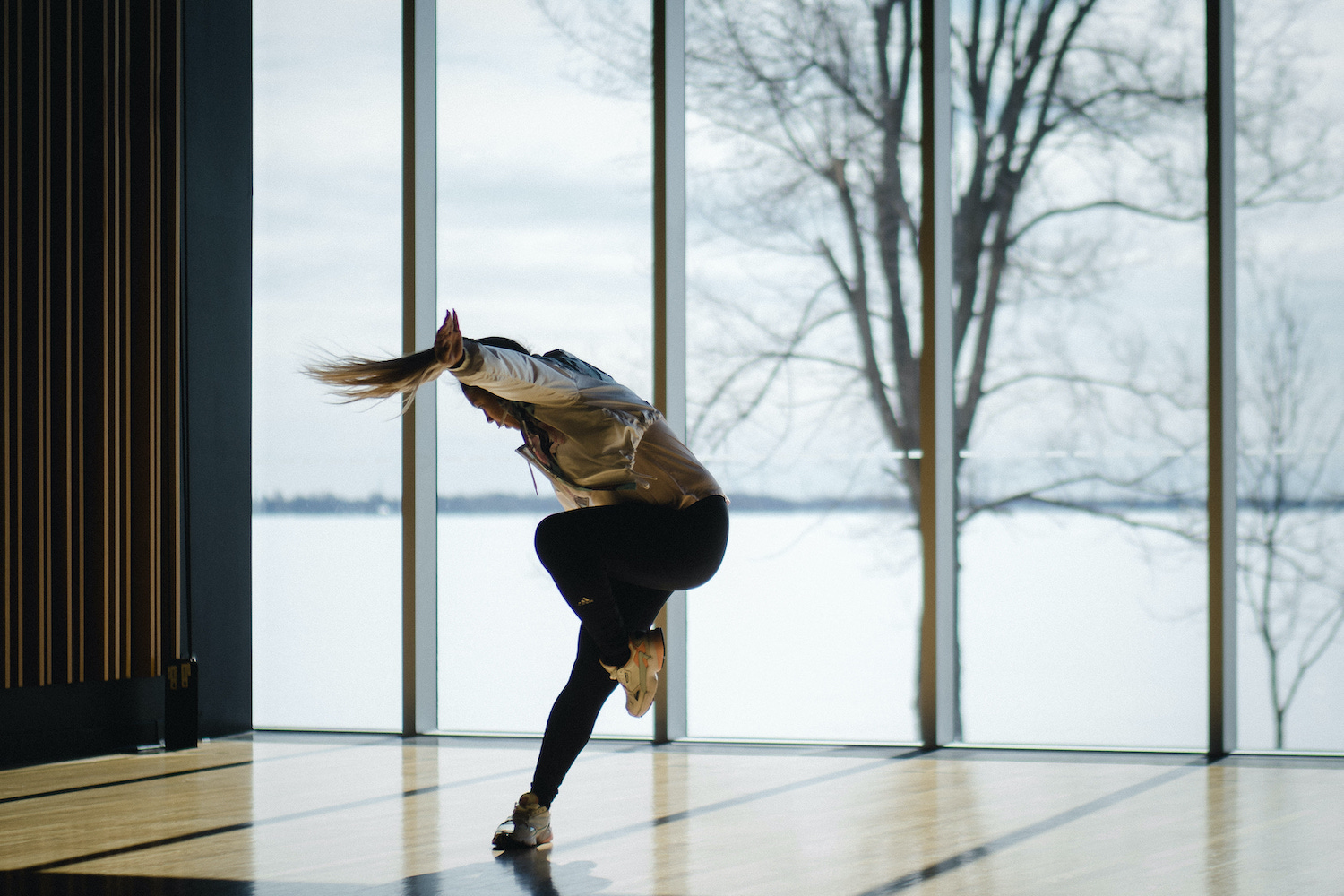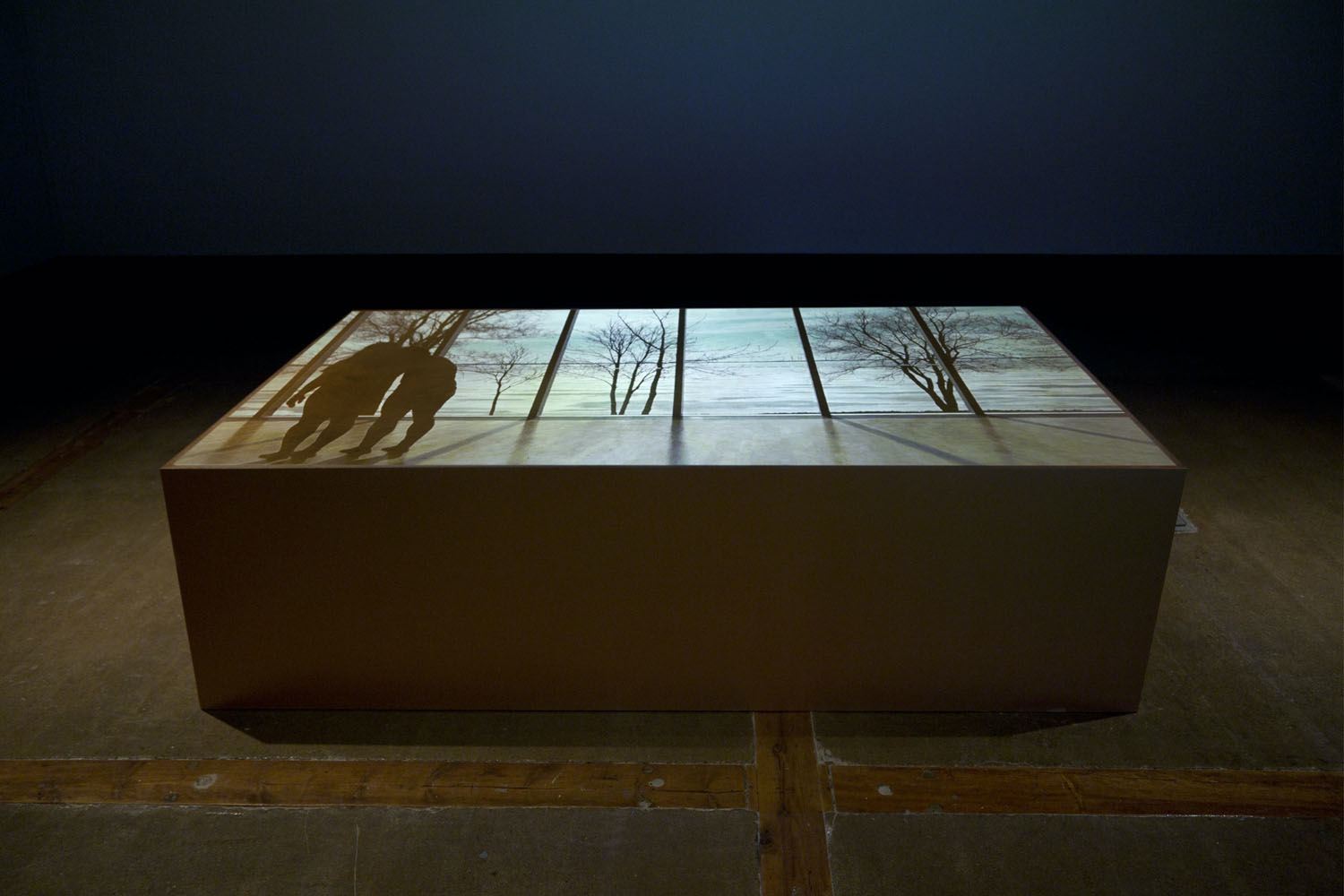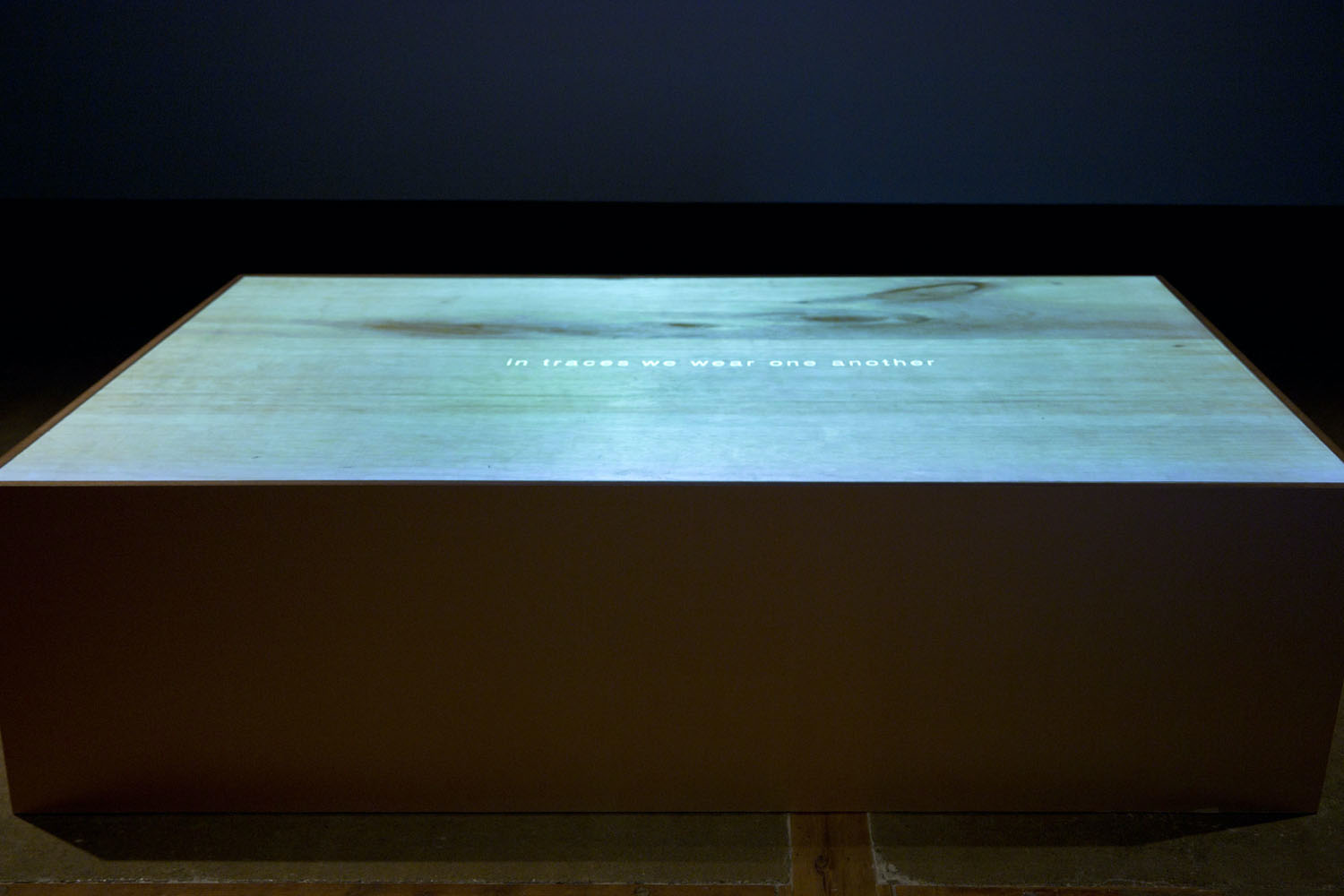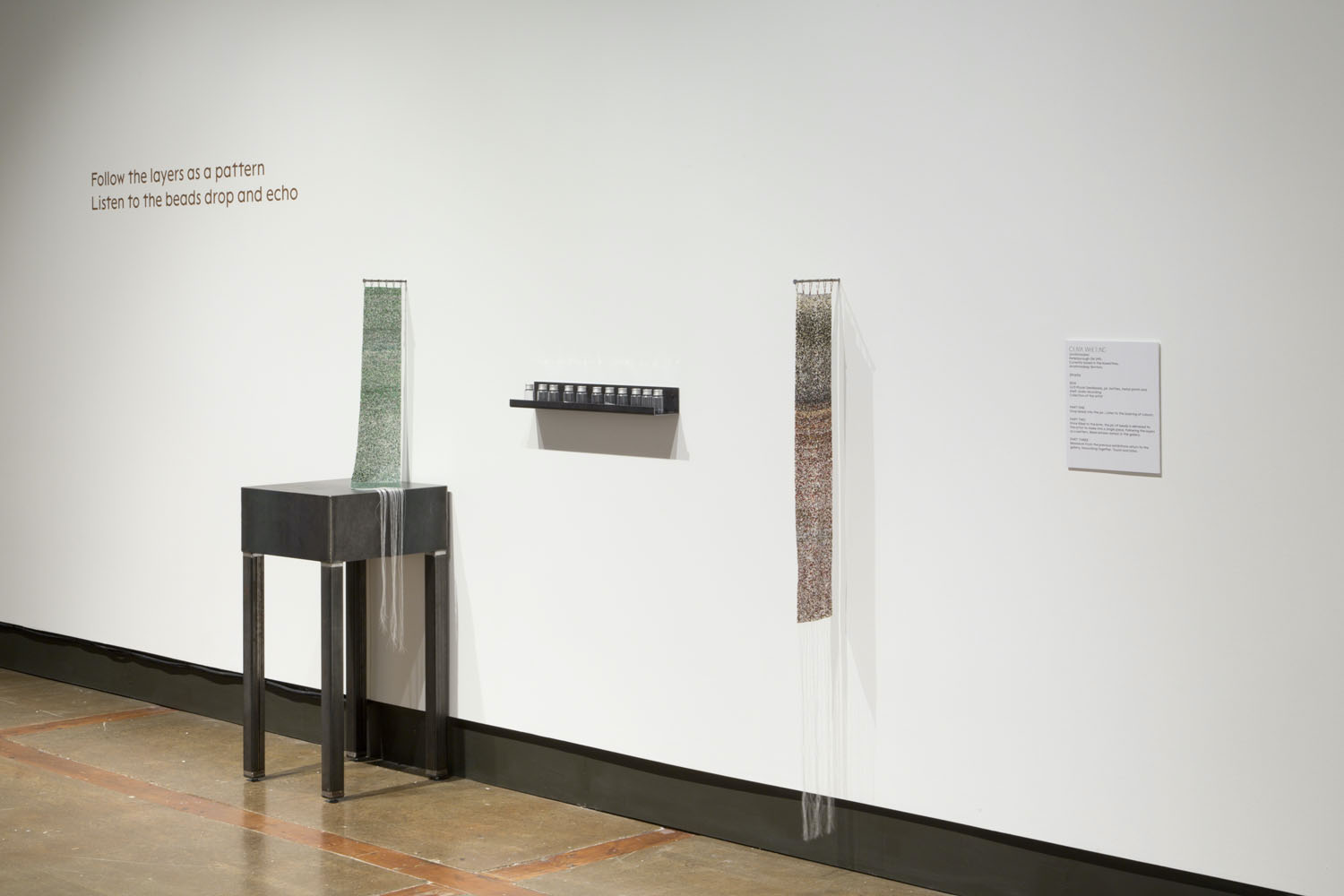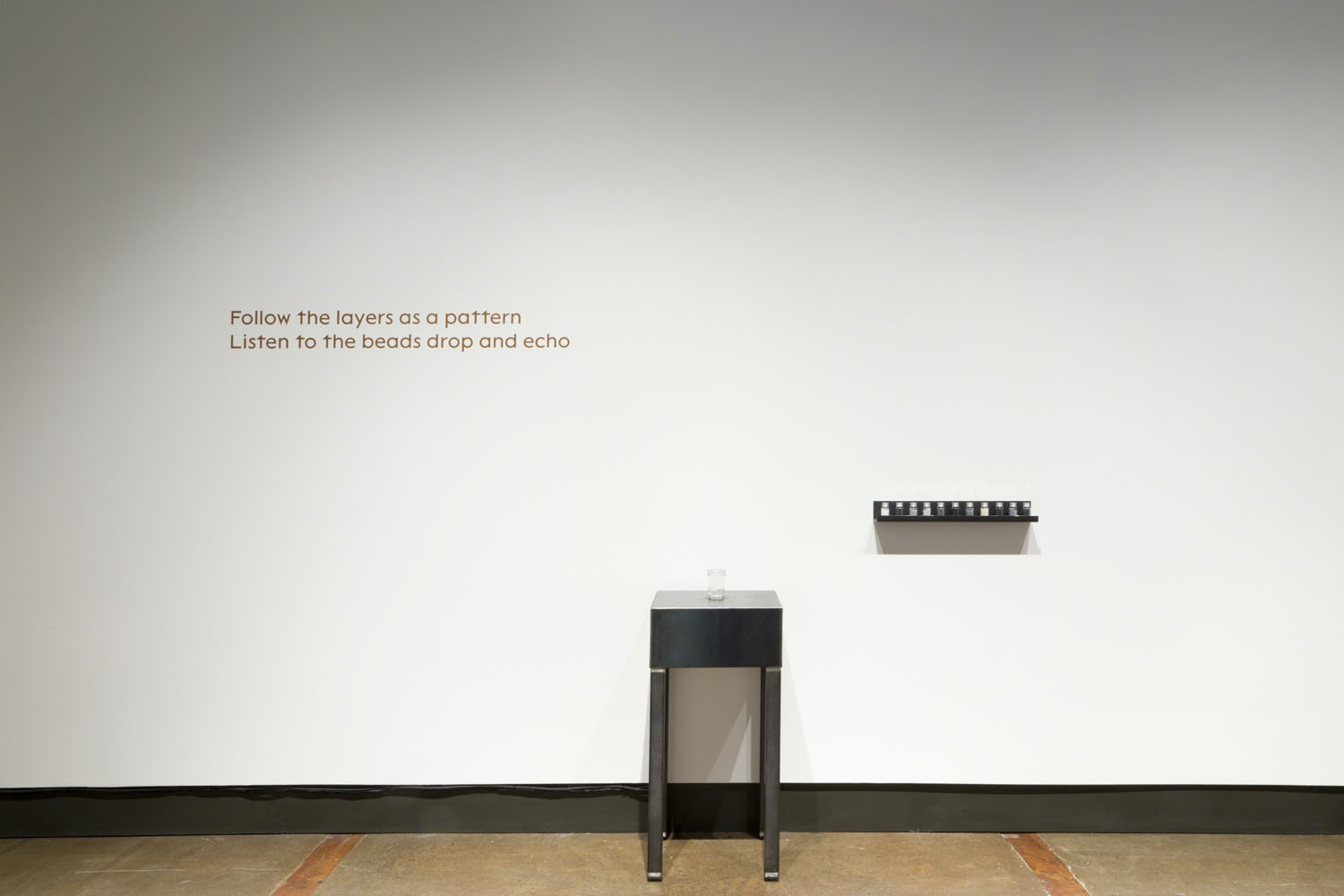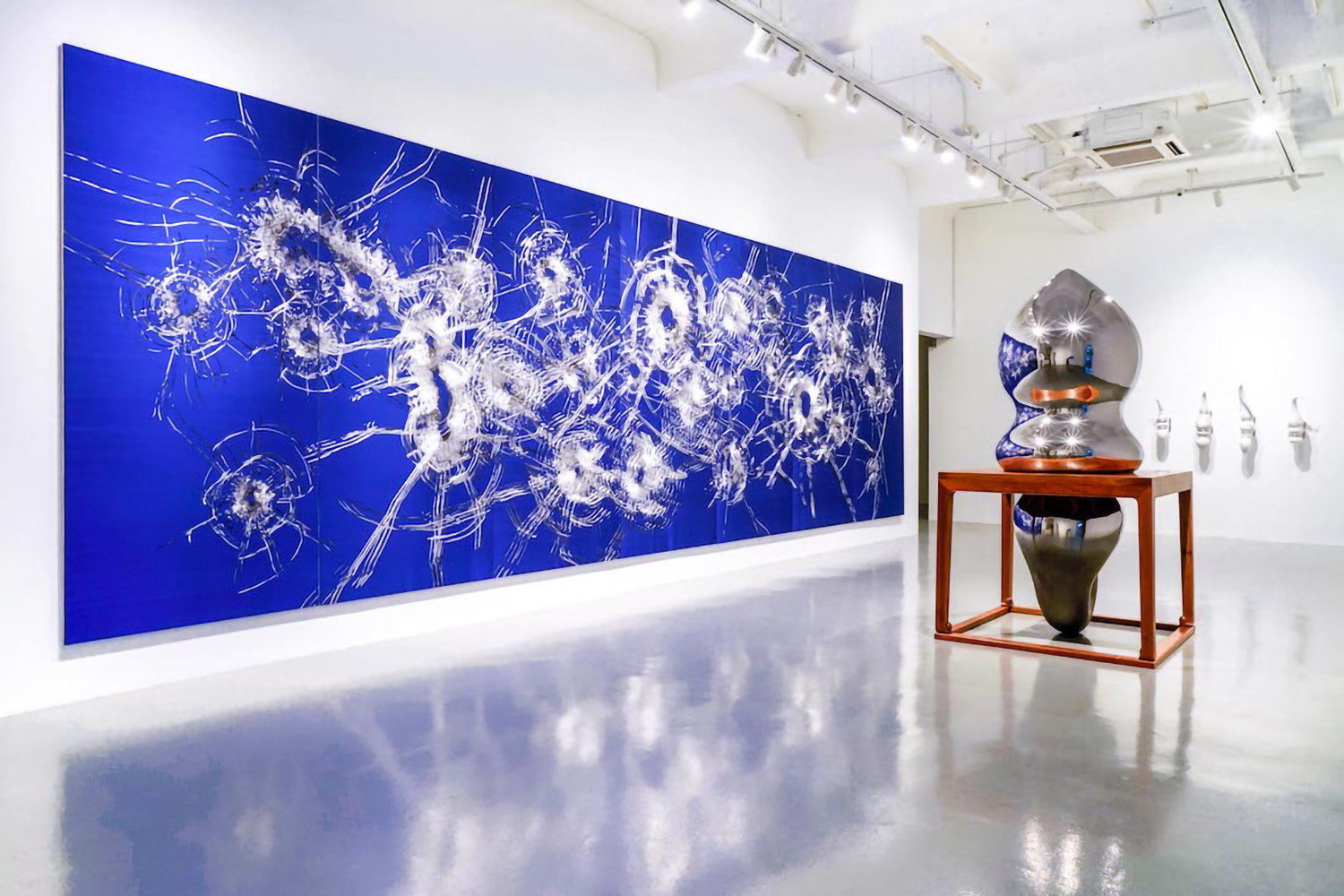“How can a score be a call and tool for decolonization?” This is the question asked by co-curators Candice Hopkins and Dylan Robinson, with the score here engaging in ongoing political action in two temporal registers: the potential to act right now in the present and the need to facilitate the struggle as a continuous process in the future.
The ability of sound to sidestep surfaces and the possibility for scores to be activated in multiple sites is foregrounded through the way the curators take the exterior façade of the Kitchener-Waterloo Art Gallery as site. This institutional infrastructure is most vividly occupied by Raven Chacon’s American Ledger (No. 1) (2018), a visual score: “For many players with sustaining and percussive instruments, voices, coins, axe and wood, a police whistle, and a match.” Boldly rendered in black and white as a large-scale digital print on fabric, the composition stretches out upon seven lines stacked vertically. Taking the form of both Western and graphic notation, the latter connects not only to visual scores by modern composers but also points back to ancient systems of knowledge transmitted outside of the Euro-American societies that initiated and now perpetuate the systems of colonial power that “Soundings” seeks to dismantle.
While Chacon’s solo contribution “for any number of musicians with any number of non-musicians” for “at least 13 minutes” demonstrates the ability of the score to facilitate collective action that requires the participants to commit to a duration of cooperation, one of the first works encountered in the galleries, by Olivia Whetung, asserts how the intention of scores can also enlist an individual in the execution of a private act. Strata (2018) invites viewers to drop beads into jars lined along a shallow shelf on the wall and to regard not only their resonance but also their improvised pattern, as once the jars are filled they are sent to Whetung, who takes the layers as a guide for the objects she produces. The result is sparkling swaths of intricate beadwork that return to the gallery from the previous iterations of “Soundings,” shifting in and out of each space, like the local Indigenous and settler audiences able to access each iteration.
The mutability of the works presented in “Soundings” and the force of time and space upon them is perhaps most evident in the intricate articulation of embodiment in Tanya Lukin Linklater’s We wear one another (2019). A collaboration with dancers Ceinwen Gobert and Danah Rosales, as well as composer and musician Laura Ortman, Lukin Linklater’s project points to the historical role of the score in informing not only sound but also choreography. Taking the form of a digital video installation projected from above, it begins with the camera approaching a Mackenzie Delta Inuvialuit gut-skin parka on a specially fabricated low-rise plinth. On loan from the Hudson’s Bay Company Collection at the Manitoba Museum, the parka became the score for the collaborative performance and appears as it did inside the first iteration of “Soundings.” This same plinth now acts as the screen surface for the video, its visible wood grain a strategy of disruption at work in the image it facilitates. Lukin Linklater rejects the neutrality of the white screen as she and the other assembled artists also reject the singularity of site. As Hopkins and Robinson conclude their collaborative poem that acts as an introduction to the exhibition: “Remember these structures as permeable, too.”

